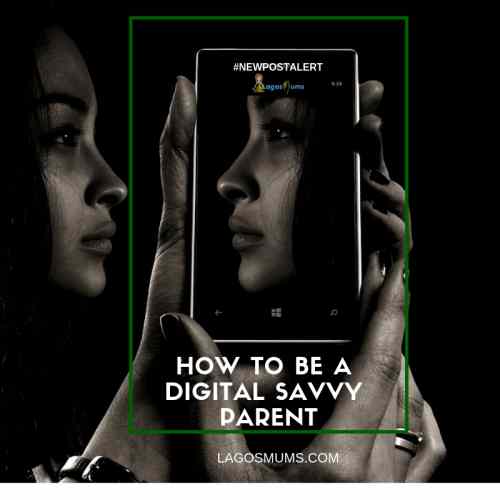Trends seem to come out faster than we can get used to it and so being a digital-savvy parent might be tough to keep up with. One minute we were talking about Snapchat and the next thing the newest platform aka TikTok pops up. One thing we cannot avoid is how connected we all are today. In addition, the pandemic has increased the amount of time our children are spending online. Parents are therefore required to rethink how they will raise successful digital citizens.

Being a Digital Savvy Parent
If you are a parent today and are raising a Gen Z, Gen Alpha or a millennial you have to be a digital-savvy parent; no ifs or buts about it! You cannot hide behind the sentiment that “you don’t get it”. By the way, last time I checked most parents are responsible for 99.9% of the smart devices and the phones in the hands of our children.
If you are a parent today and are raising a Gen Z you have to be a digital-savvy parent; no question about it Share on X
As I point out, no responsible parent would give their child car keys and drop them on the third mainland bridge or highway without any training! It is the same with the internet and social media. In reality, it might even be more dangerous than driving inexperienced.
We will be discussing some of the things that parents need to be aware of as a modern parent, navigating Digital media. Get ready, take some notes and let’s learn how to be a digital-savvy parent.
Parental Management Software
One of the tools that is useful for every parent, is to have a good and robust parental management Software.
I get asked a lot which software I use for my parental control, after some research and trying different products, I am very satisfied with and recommend Qustodio. You can use this link here to sign up and give yourself the peace of mind you need bit.ly/LMQustodio.
However it is important to note that monitoring is only one part of it, you still need to be aware and have regular conversations with your child about their online behaviour.

You are raising digital natives
If your child is younger than 18 years old, you are definitely raising digital natives. This means you are raising children who were born into a world that is always connected. They are used to thinking digital and comfortable with all forms of digital technology. Hands up if you have been surprised at how they seem to be able to use a smart device without you teaching them?
What matters is how they use the internet and for them to know that there is a good and a bad side. So where will they learn all this? The truth is they will learn with or without you but it is best that they can learn from and with you! In today’s age, parents can no longer boast of knowing everything (not that anyone does really but at least before you could pretend to). Nowadays, a child can get any information at a click of a button.
Social Media
Social media is the way people communicate today, everyone is using it in some shape of form. Some schools even have their own version which is for sharing homework and allows students to communicate. People like to share selfies, photos, quotes of the day and much more. It is not bad! What is bad is when the use of social media becomes excessive or you notice that your child’s use of various social media tools leaves them feeling sad, depressed or anxious.
As a digital savvy parent, what can you do?
Accept that social media is a thing! accept that your children are going to want to be on social media. What you need to do is know which platforms are out there, understand the downsides to the use of social media as well as the benefits.
Set your limits
Know your child and have an acceptable age when your child should get a social media account. Several of the platforms have their own age limits, however, it is recommended that you decide your age limit. Because a platform says 13 years old is acceptable does not mean that you need to agree to this age for your child.
As a digital savvy parent accept that social media is a thing Share on XDigital Savvy Parent Note: You should get on the platforms yourself and understand how they are used. See kids today seem to know more than us when it comes to digital matters so we need to upscale. Follow them and see what they share, what is trending and stay relevant.

Types of Social Media Platforms
Some of the popular social media channels for teens are Instagram, Snapchat, Tik tok, Kik Messenger, WhatsApp and so much more. Some of these apps have the allure of being self-destructing aka; once the viewer sees what has been shared it disappears. In reality, we know this is not the case right? It is probably saved on a server somewhere, secondly, the viewer can easily take a screenshot and share.
Another trend is the increase in social “confessional” apps such as Whisper; these allow people to share their emotions and things on their mind which typically include topics such as insecurity, depression, substance abuse, and various lies told to employers and teachers.
Anyone sharing online should ask these questions; what are you sharing? why are you sharing and with whom are you sharing? Do not share inappropriate things because you think it will disappear. Learn more on Apps kids are heading to here.
Fake News
Anyone can share whatever they want to online. The growth of the world wide web is based on the connectivity and the free sharing of knowledge and information. No one regulates the content shared online. Google will bring up content based on what is most relevant not necessarily what is accurate.
Just recently my children were watching a video on Youtube that was posted one year ago. The video was about children with amazing skills around the world, such as a child who can start a fire with her mind. I decided to google this and noticed that the article was first published in 2011 (not a year ago) and neither was it posted on any verifiable site.
Enter the concept of fake news; anything that is not true but is shared is fake news. How can your children identify fake news? Teach them how to be a digital detective by testing their source of information; to always verify from multiple sources and not to take action based on every news they get. WhatsApp has recorded instances where fake news has started a panic that sometimes leads to fatalities.
Our children (and adults) can learn to pause before reacting to anything they see online. Just because it showed up on google or was shared on WhatsApp does not mean it is true. Learn the skill of being a news detective. Watch this video by Quartz on how to spot fake news.
FOMO
Fear of missing out! Adults suffer from this and children suffer from this more. A feeling of not being good enough or not enjoying life like all the people on social media. It is a real thing and is affecting teenagers all over the world.
FOMO – “anxiety that an exciting or interesting event may currently be happening elsewhere, often aroused by posts seen on social media”.
Teens and young adults today feel the pressure to be online 24/7 and have information overload. They are reportedly getting fewer quality hours of sleep because they feel the pressure to respond to messages immediately. Research is showing all this is contributing to depression and other mental health challenges.
As a digital savvy parent, rather than attempt to get into the struggle of not allowing online access institute a concept of digital sunset. Digital sunset would be a time when you automatically disable smartphones, tablets, and other electronic devices later in the evening.
Communication is also very key when it comes to raising digital natives. Talk to them often about what they are seeing online. Pay attention to changes in behaviours and constantly work on building healthy self-esteem.
Sextortion is rising dramatically Through Video Chats
Through video chats, predators entice kids into sending compromising pictures of themselves. Then the kids are threatened with exposure if they don’t send more. It’s not just happening with older teens. In fact, 1 in 4 known victims were 12 or under when they were threatened.
Screen Time
Screen time cannot be over-emphasized, that is the amount of time that children are spending on screens. Screens include tablet, phones, computers and television. Too much screen time plus what is being consumed makes an impact on your child.
[Read: Tips on How to Monitor Your Child’s Screen Time].
There are many guidelines on how much time is appropriate depending on the age of your child. In reality, you need to observe your child and balance the recommendations to find out what works. As intentional parents, we must reduce the negative effects of too much screen time on our children.
What can Parents do to Navigate the New Normal?
Whether you were a parent who had a plan or not when it came to your child’s use of screens and going online; the pandemic has changed so many screen time rules in most homes.
Overall, it is important for parents to feel that they can still bring their values into the world of technology and parenting. Parents need to understand their children and spend time understanding them, asking them what they like doing online and why.
For a whole lot more on technology and parenting, click here to learn more on how to be a digital-savvy parent. Read more here on how to raise digital-savvy children and get some tips on how to monitor your child’s screen time here.
Be a digital-savvy parent in 2021 #LagosMums Share on XDownload a digital-savvy parenting guide
Digital Savvy Parenting Guide
Are you struggling with monitoring your child's online behaviour? Get this simple guide plus get a link to a highly recommended parenting management software.
Subscribe for parenting daily nuggets on how to raise successful digital citizens taught by parenting coach, Yetty Williams. Subscribe here now


